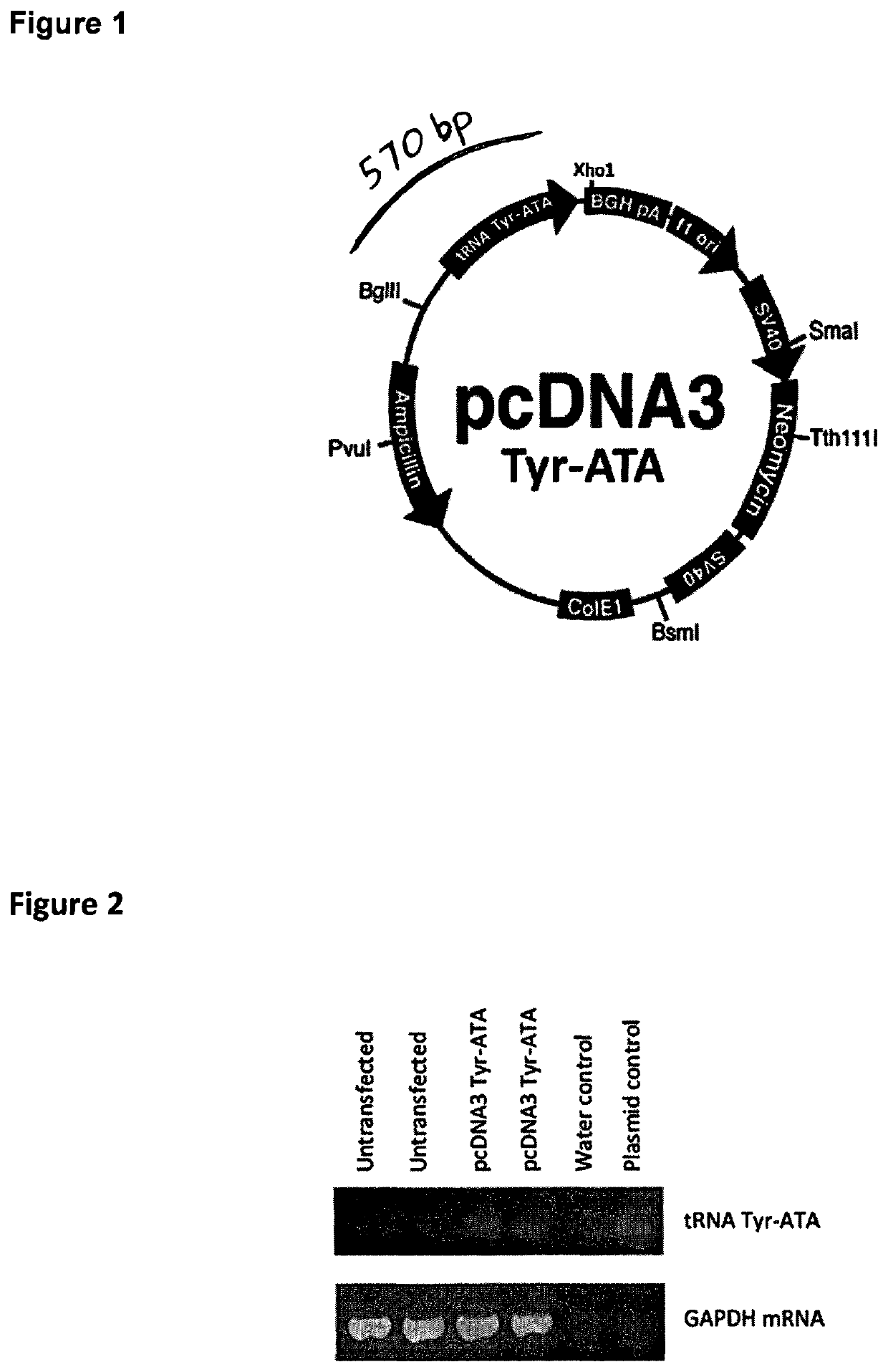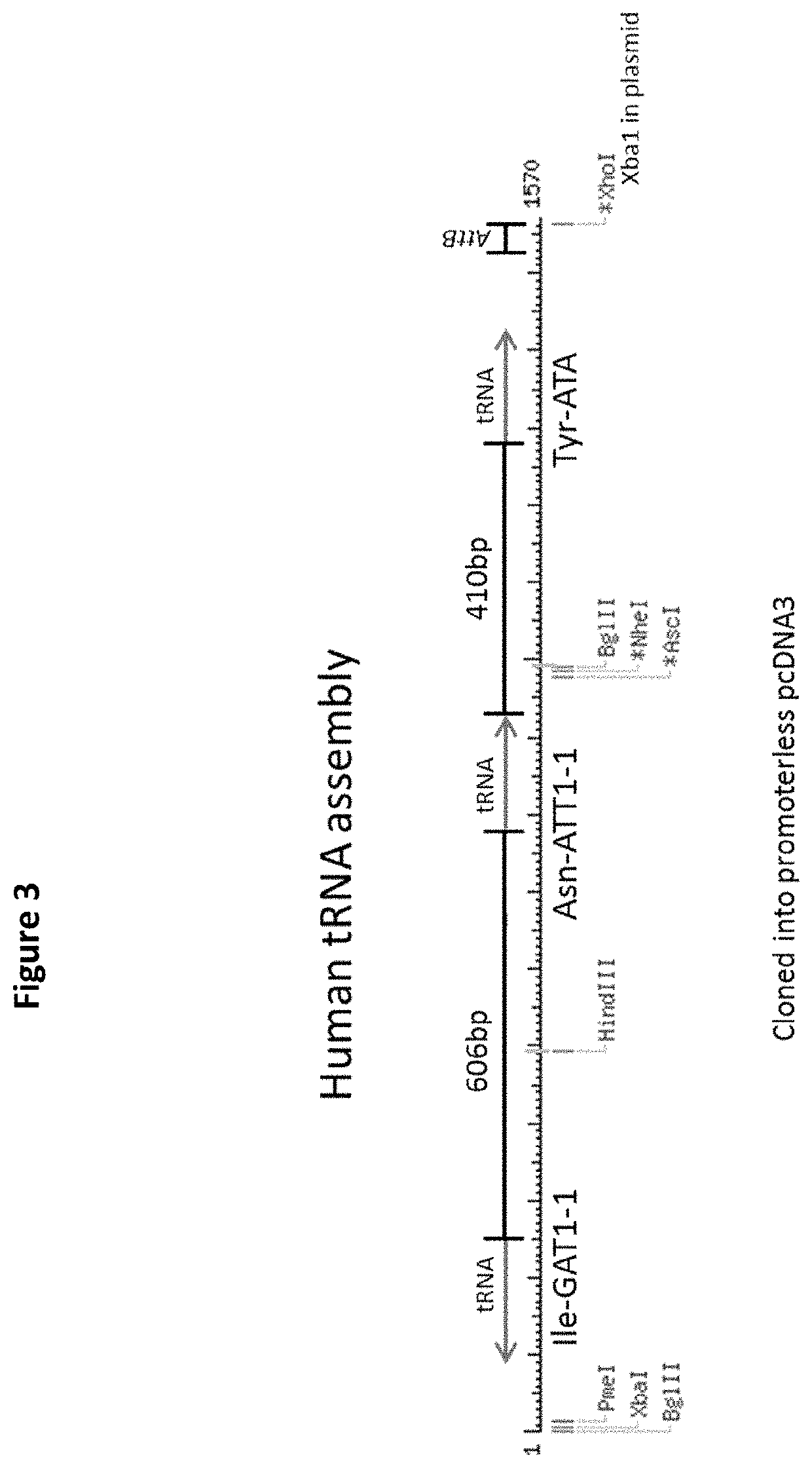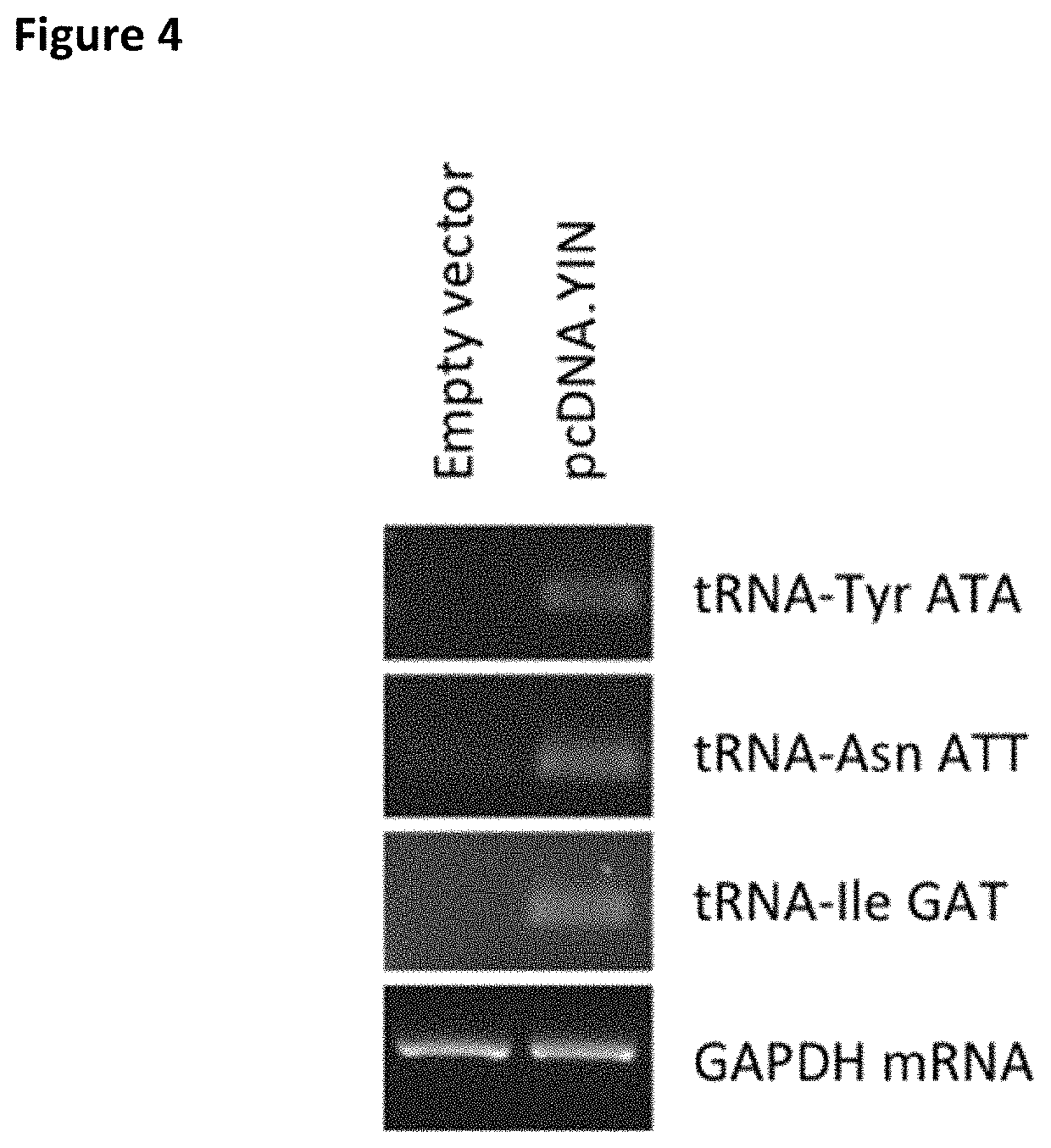Recombinant protein production
a technology of recombinant protein and protein, which is applied in the field of recombinant protein expression systems, can solve the problems of less efficient translation and potential mis-incorporation of amino acids
- Summary
- Abstract
- Description
- Claims
- Application Information
AI Technical Summary
Benefits of technology
Problems solved by technology
Method used
Image
Examples
example 1
[0131]CHO cells do not have genes for tRNA-IleGAT, tRNA-AsnATT or tRNA-TyrATA and therefore rely on wobble to decode TAT, AAT and ATC codons. To allow wobble-independent decoding of these codons, we made and introduced a construct, pcDNA.YIN, carrying human tRNA-IleGAT, tRNA-AsnATT and tRNA-TyrATA genes. A DNA fragment containing the tRNA14-TyrATA gene from human chromosome 2 was synthesized and cloned (FIG. 1). The construct was stably transfected into CHO cells and RT-PCR analysis confirmed expression of the transgene (FIG. 2). The same approach was used to introduce a synthetic assembly (FIG. 3), in pcDNA.YIN, expressing human tRNA-TyrATA, tRNA-AsnATT and tRNA-IleGAT. Expression of all three human tRNAs in recipient CHO cells was confirmed by RT-PCR (FIG. 4). The effect of these tRNAs was tested on expression of Herceptin (trastuzumab) in CHO cells stably transfected with pCET1006L+H expression vector (FIG. 5). These cells were transfected with empty vector, pcDNA.YIN and / or pSUP...
example 2
[0132]S. cerevisiae relies on wobble to decode the CTG codon for leucine, as it has no tRNA-LeuCAG. To remove the wobble-dependence of this codon, we created a strain of S. cerevisiae that carries an exogenous tRNA-LeuCAG gene from Schizosaccharomyces pombe. The effect of this tRNA was measured on expression of genes that are rich in CTG codons. A DNA fragment containing the trna49-LeuCAG gene from chromosome 1 of S. pombe was synthesized and cloned into pRS426 (FIG. 9) to create plasmid pAU39. Western blotting was used to determine the effect of pAU39 on expression in S. cerevisiae of COG8 (FIG. 10) and DCS (FIG. 12). There are 10 CTG codons in COG8 and 17 in DCS, but none in Pgk1, an endogenous protein that was used as control. For both COG8 and DCS, expression was enhanced by the tRNA-LeuCAG gene on pAU39 relative to the empty vector control. We conclude that the efficacy of S. cerevisiae as a platform for expressing transgenes can be improved by introduction of exogenous tRNA to...
PUM
| Property | Measurement | Unit |
|---|---|---|
| temperatures | aaaaa | aaaaa |
| temperatures | aaaaa | aaaaa |
| temperatures | aaaaa | aaaaa |
Abstract
Description
Claims
Application Information
 Login to View More
Login to View More - R&D
- Intellectual Property
- Life Sciences
- Materials
- Tech Scout
- Unparalleled Data Quality
- Higher Quality Content
- 60% Fewer Hallucinations
Browse by: Latest US Patents, China's latest patents, Technical Efficacy Thesaurus, Application Domain, Technology Topic, Popular Technical Reports.
© 2025 PatSnap. All rights reserved.Legal|Privacy policy|Modern Slavery Act Transparency Statement|Sitemap|About US| Contact US: help@patsnap.com



